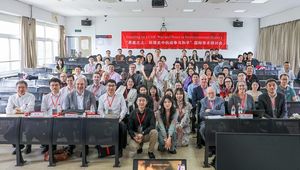Interdisziplinärer Sammelband beleuchtet Licht- und Schattenseiten der Agrarglobalisierung

Soeben ist der interdisziplinäre Sammelband "The Age of the Soybean. An Environmental History of Soy During the Great Acceleration", herausgegeben von Claiton Marcio da Silva und Claudio de Majo, erschienen. Er beleuchtet die Licht- und Schattenseiten der Agrarglobalisierung am Beispiel von Soja im Anthropozän. Darin analysiert Ernst Langthaler vom Institut für Sozial- und Wirtschaftsgeschichte der JKU Linz den Aufstieg von Soja zum Spitzenreiter im Agrarwelthandel seit Mitte des 20. Jahrhunderts. Die Open Access-Version des Bandes wurde durch eine Förderung der JKU Linz ermöglicht.
Aus der Verlagsankündigung: "The soybean is far more than just a versatile crop whose derivates serve the protein needs of a meatless diet. One of the world’s most important commodities, soy represents the embodiment of mechanised industrial agriculture and is one of the main actors behind the socioeconomic, political and ecological transformations of industrial farming in several world regions. Despite the crop’s potential as a cheap source of vegetal protein for human consumers, most industrial soybean production has fuelled the global meat industrial complex, as animal feed. Soybean is thus, paradoxically, still a relatively ‘invisible’ crop to the public at large, although its global yields continue to increase at stupendous rates, lining the pockets of agribusiness and to the detriment of traditional agriculture.
The transnational socio-ecological and economic entanglements characterising this versatile legume’s global expansion have prompted scholarly attention as researchers around the world have begun to unveil the main historical drivers behind the rise of the soybean in the global food chain. This book aims to expand the analysis, offering the most significant effort so far at an environmental history of soybeans. Interrogating the socioeconomic and ecological transformations determined by (and determining) the rise of soy in international food chains during the Great Acceleration, the volume gathers contributions from an international cast of researchers, working in numerous geographical contexts, from Japan and China, to India, African nations, the Southern Cone of Latin America, Northern Europe and the United States. Soybean farming, breeding, processing and marketing have bound together the histories of these diverse regions and altered beyond recognition their ecological and socio-economic contexts."
Open Access-Zugang über JSTOR: https://www.jstor.org/stable/j.ctv309h1fx, öffnet eine externe URL in einem neuen Fenster









